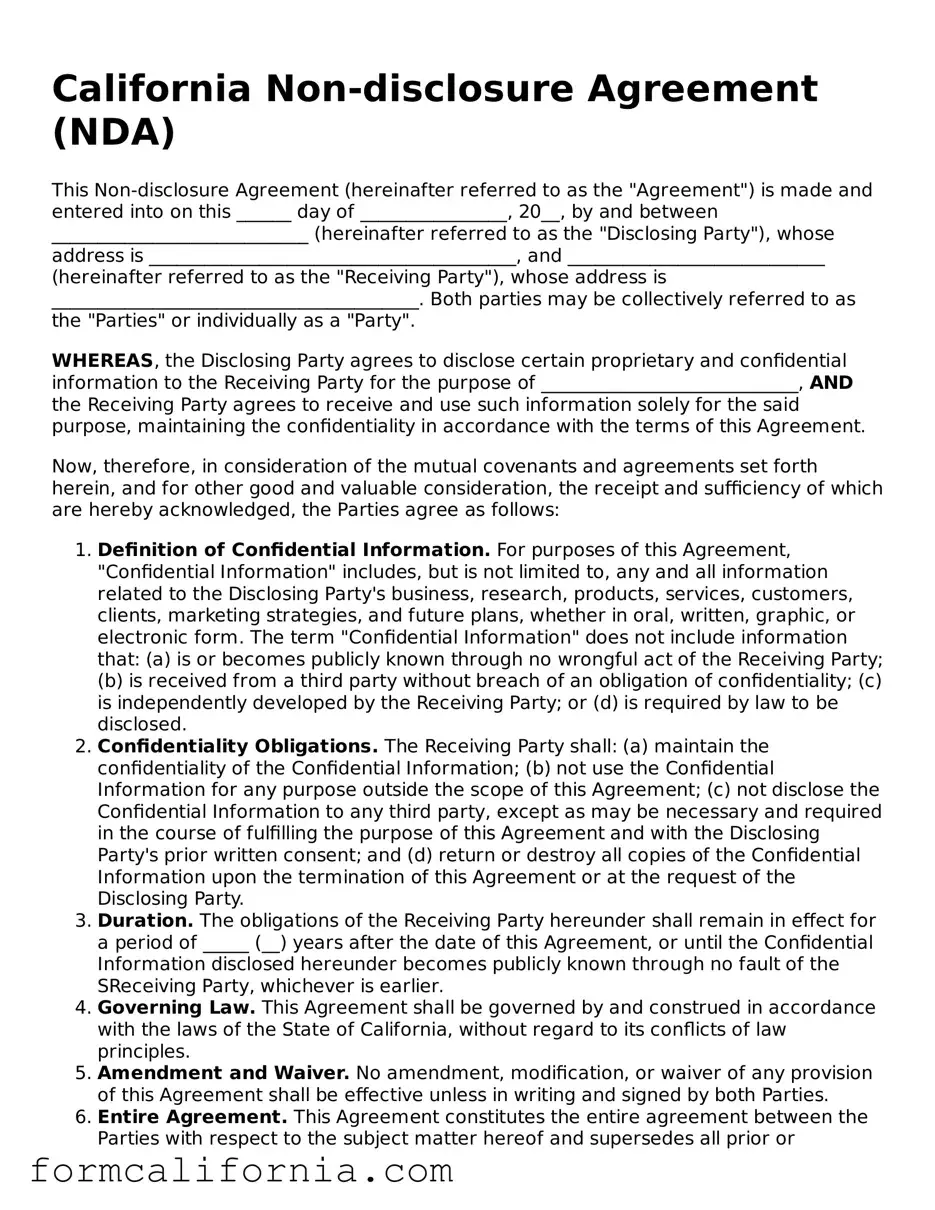What is a Non-disclosure Agreement (NDA) in California?
An NDA in California is a legal contract in which one or more parties agree not to disclose confidential information that they have shared with each other as part of their business relationship. It helps protect sensitive information from being made public.
Why do I need an NDA?
An NDA is essential for protecting trade secrets and other confidential information within your business. It is particularly important if you are sharing proprietary information with potential investors, employees, or partners. An NDA ensures that your secrets stay within the walls of your business, safeguarding your competitive edge.
What key elements should be included in a California NDA?
A California NDA should include several key elements to ensure its effectiveness and enforceability, including:
-
Identification of the Parties:
Names and roles of the parties involved.
-
Definition of Confidential Information:
A detailed description of the information that is considered confidential.
-
Obligations and Exceptions:
The duties of the receiving party regarding the confidential information and any exceptions to the confidentiality obligation.
-
Term:
The duration of the agreement’s validity.
-
Governing Law:
A statement indicating that California law will govern the agreement.
Is an NDA legally binding in California?
Yes, an NDA is legally binding in California if it meets the state’s requirements for validity. This includes a clear definition of what constitutes confidential information, the mutual agreement of involved parties, and consideration — something of value exchanged between the parties.
Yes, an NDA in California can be designed to cover information disclosed at any time — past, present, or future. It is vital to specify this coverage clearly in the agreement to ensure complete protection of all types of information.
How long does an NDA last in California?
The duration of an NDA in California is determined by the terms set forth in the agreement. While there is no statutory limit on the length an NDA can last, it’s common for an NDA to have a term of anywhere from 1 to 5 years. However, protection for trade secrets can last indefinitely, as long as the information remains secret.
Can I enforce an NDA against someone located in another state?
Enforcing an NDA against someone in another state is possible, but it can be more challenging. The agreement should include a provision that specifies California law governs the agreement and that any legal actions must be brought in California. This can help, but enforcement still requires navigating the legal intricacies of multiple jurisdictions.
What happens if someone breaks an NDA in California?
If someone breaches an NDA in California, the non-breaching party can take legal action to enforce the agreement, which may include seeking damages for the breach or an injunction to prevent further disclosure of the information. The specific remedies available will depend on the terms of the NDA and the nature of the breach.
Does an NDA need to be notarized in California?
No, an NDA does not need to be notarized in California to be legally binding. However, ensuring that the agreement is properly executed — meaning signed by all parties involved — is crucial for its enforceability.
California NDA forms can be obtained from several sources, including legal services providers and online platforms offering legal documents. It’s important to ensure that any form you use complies with California law and suits the specific needs of your situation. Consulting with a legal professional is advisable to ensure the agreement is valid and enforceable.
